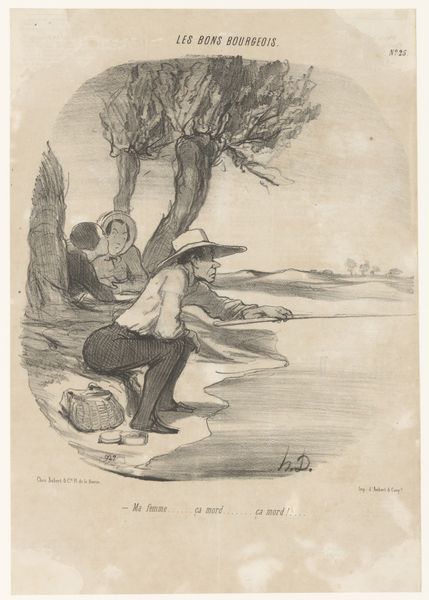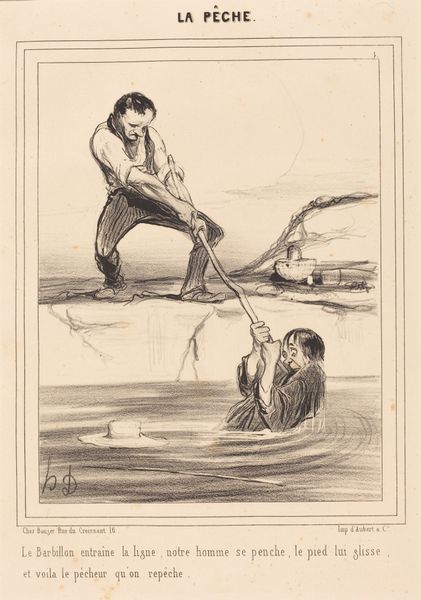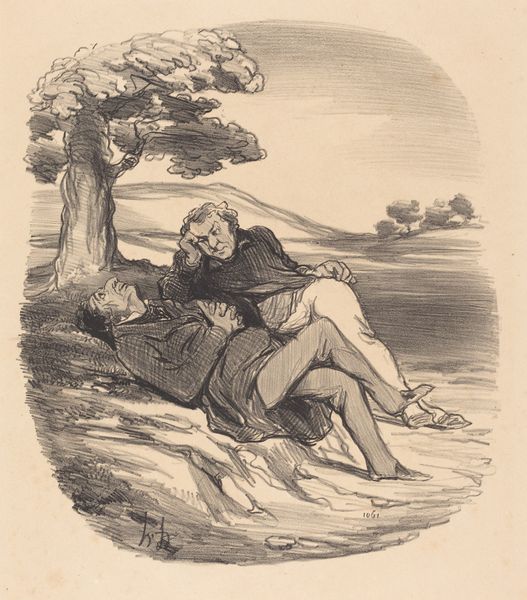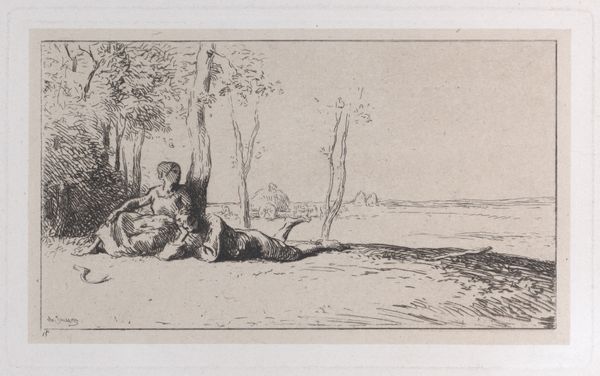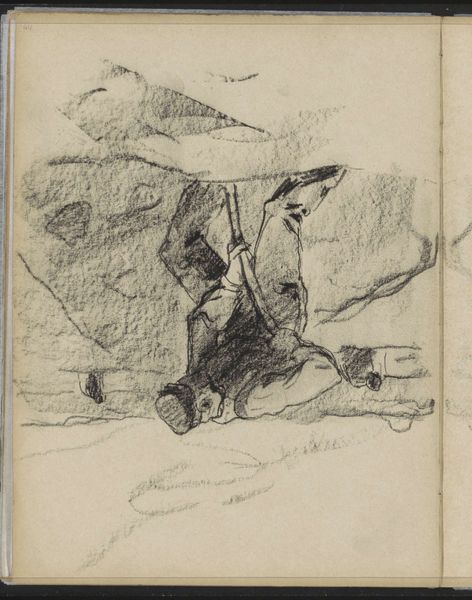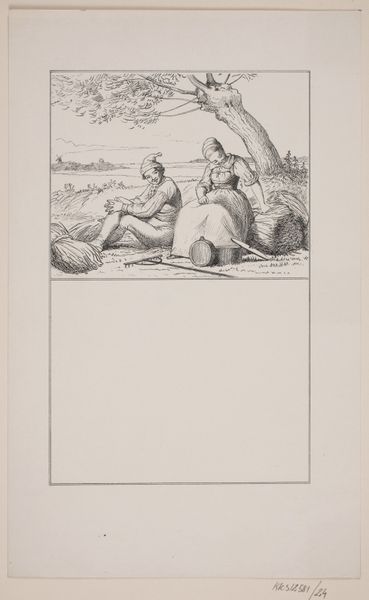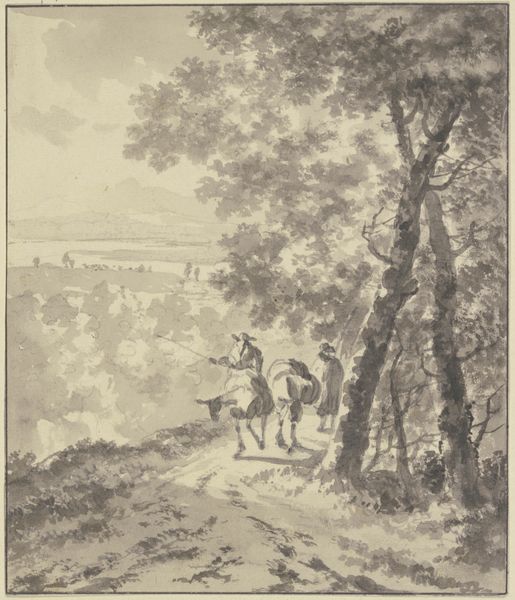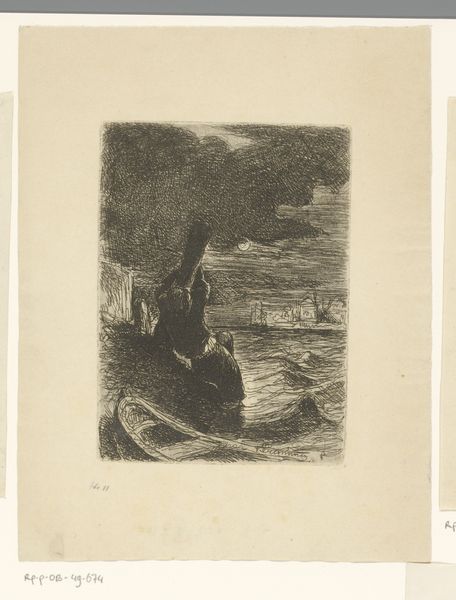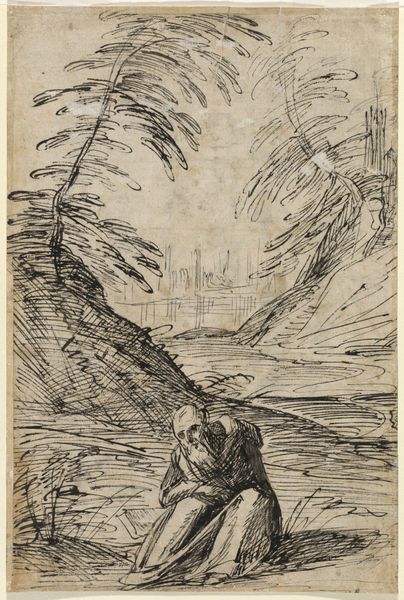
drawing, print, pencil
#
drawing
# print
#
caricature
#
pencil sketch
#
landscape
#
figuration
#
romanticism
#
pencil
#
genre-painting
Copyright: National Gallery of Art: CC0 1.0
Curator: Honoré Daumier's print, "Ma femme... ça mord... ça mord!", created in 1846, is a biting caricature. It immediately strikes me with its undercurrent of social critique and melancholy moodiness achieved with the use of pencil. Editor: There's definitely a sharp, cynical wit at play here, conveyed through the distorted figures. Look at the angler by the water's edge in contrast to the tender moment occuring in the background. The medium--print--suggests a certain level of mass dissemination of that viewpoint as well. How do you read Daumier’s composition here, Curator? Curator: The composition reinforces societal roles and class distinctions. We see the working class out to feed his family, presumably; while we know this was published in Le Charivari, so there's likely an undertone aimed at the bourgeois here. There is also an exploration of power dynamics within relationships: the caption, roughly translating to “My wife… it bites… it bites!", hints at a shrewish or perhaps emasculating spousal dynamic. Editor: Right. It also emphasizes the physicality of the work: Daumier's skilled handling of lithographic materials, to get all of these distinct gray areas in shading. Note how Daumier’s lines aren’t just lines, but embody character. It invites scrutiny into the socio-economic conditions reflected here, beyond the immediate narrative. What would you say is the main political current we can find in the piece? Curator: The political message resides in Daumier’s ability to use humor to unveil inequalities. He challenges patriarchal norms, presenting the man as subservient to the 'biting' woman. It critiques both the family and social hierarchy. The print functioned as social commentary during the July Monarchy, where political and social unrest bubbled beneath a seemingly calm surface. Daumier challenges the status quo, empowering marginalized voices. Editor: Exactly! I see in Daumier's treatment of materials not just technical skill but an advocacy, challenging the art world’s valorization of certain forms over others and reminding us of art's inherent connection to labor and societal forces. The roughness almost mirrors the hardships faced by his subjects, don't you agree? Curator: It is hard to deny Daumier had an axe to grind. Thank you for sharing these aspects with me. It all definitely encourages further critical analysis. Editor: Thank you, Curator, it’s a rich testament to how an image and process might crystallize entire political realities.
Comments
No comments
Be the first to comment and join the conversation on the ultimate creative platform.
